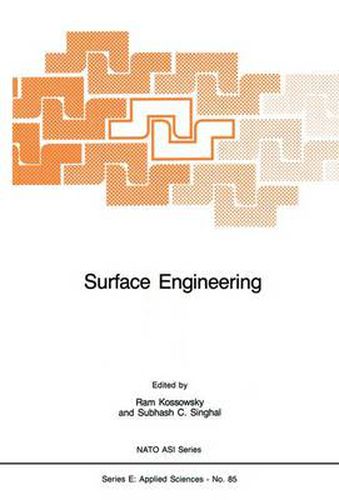Readings Newsletter
Become a Readings Member to make your shopping experience even easier.
Sign in or sign up for free!
You’re not far away from qualifying for FREE standard shipping within Australia
You’ve qualified for FREE standard shipping within Australia
The cart is loading…






This title is printed to order. This book may have been self-published. If so, we cannot guarantee the quality of the content. In the main most books will have gone through the editing process however some may not. We therefore suggest that you be aware of this before ordering this book. If in doubt check either the author or publisher’s details as we are unable to accept any returns unless they are faulty. Please contact us if you have any questions.
Over the last few years there has been increasing need for systematic and straregically designed experiments of surface morphology evolution resulting form ion bombardment induced sputtering. Although there is an impressive number of investi gations {1} concerned with semiconductor materials as a result of immediate applications, the most systematic investigations have been conducted with fcc metals with particular interest on single crystal Cu {2,3}. Evidence now exists that within certain para meters (i. e ion species (Ar+), ion energy (20-44 KeV), substrate 2 temperature (80-550 Degrees K), dose rate (100-500 gA cm- ) , residual x 5 9 pressure (5 10- to 5x10- mm Hg) and polar and azimuthal angle of ion incidence {4} reproducible surface morphology (etch pits and pyramids) is achieved on the (11 3 1) specific crystallographic orientation. The temporal development of individual surface features was alsoobserved in this laterstudy {4}, by employing an in situ ion source in the scanning electron microscope at Salford, a technique also empolyed in studies of the influence of polar angle of ion incidence {5} and surface contaminants {6} on the topographyof Ar+ bombarded Si. Studies have also been made on the variation of incident ion species with the (11 3 1) Cu surface and it was fully recognized {7} that residual surface contaminants when present could playa major role in dictating the morhological evolution.
$9.00 standard shipping within Australia
FREE standard shipping within Australia for orders over $100.00
Express & International shipping calculated at checkout
This title is printed to order. This book may have been self-published. If so, we cannot guarantee the quality of the content. In the main most books will have gone through the editing process however some may not. We therefore suggest that you be aware of this before ordering this book. If in doubt check either the author or publisher’s details as we are unable to accept any returns unless they are faulty. Please contact us if you have any questions.
Over the last few years there has been increasing need for systematic and straregically designed experiments of surface morphology evolution resulting form ion bombardment induced sputtering. Although there is an impressive number of investi gations {1} concerned with semiconductor materials as a result of immediate applications, the most systematic investigations have been conducted with fcc metals with particular interest on single crystal Cu {2,3}. Evidence now exists that within certain para meters (i. e ion species (Ar+), ion energy (20-44 KeV), substrate 2 temperature (80-550 Degrees K), dose rate (100-500 gA cm- ) , residual x 5 9 pressure (5 10- to 5x10- mm Hg) and polar and azimuthal angle of ion incidence {4} reproducible surface morphology (etch pits and pyramids) is achieved on the (11 3 1) specific crystallographic orientation. The temporal development of individual surface features was alsoobserved in this laterstudy {4}, by employing an in situ ion source in the scanning electron microscope at Salford, a technique also empolyed in studies of the influence of polar angle of ion incidence {5} and surface contaminants {6} on the topographyof Ar+ bombarded Si. Studies have also been made on the variation of incident ion species with the (11 3 1) Cu surface and it was fully recognized {7} that residual surface contaminants when present could playa major role in dictating the morhological evolution.